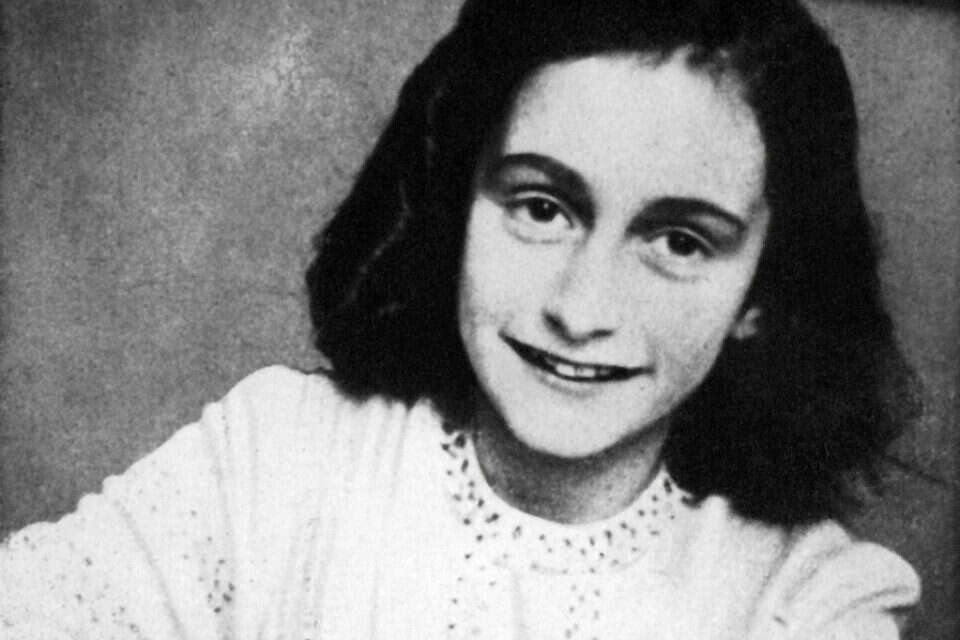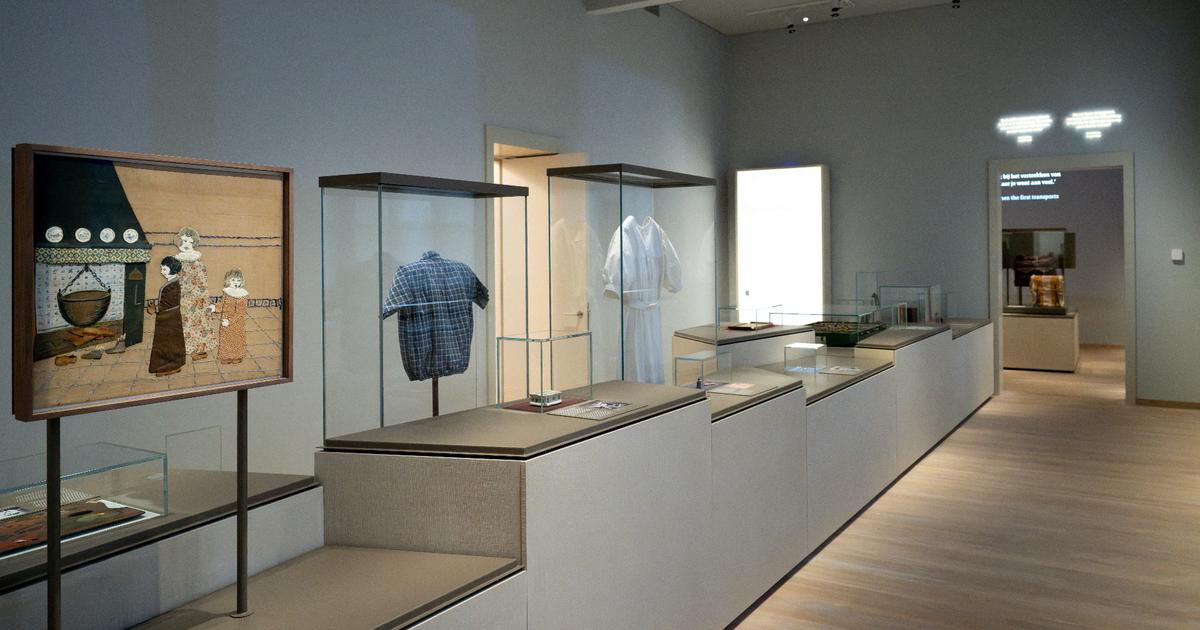When Vince Pancock retired from the FBI and moved to Florida in 2014, he did not expect the phone call he received two years later.
"On the line was a colleague from the Netherlands who said, 'If you're done lying on the beach, we have a bag for you,'" he said in an interview with the prestigious "60 Minutes" program.
This was the beginning of work on the most important case of his career - investigating the death of Anne Frank.
The same Pancock colleague suggested to a former agent, who worked for many years at the FBI mostly as a special agent against Colombian drug cartels, try to solve the long-standing mystery - who was the mysterious informant who revealed the hiding place of Anne Frank and her family in the Netherlands - and caused her death.
Pancock could not refuse the offer.
Frank, as is well known, was a Jewish girl who kept a diary during the Holocaust in which she personally described how she went through the years of horror.
On August 4, 1944, the hiding place of Frank and her family was exposed as a result of the tip-off, and they were transferred to the Auschwitz extermination camp.
On October 28, Anna and her sister Margot were transferred to the Bergen-Belsen concentration camp, where they died of typhus.
Her Diary, published after the Holocaust, has become one of the best-known books and a real must-read.
Specials on computers and peripherals
Over the years many have tried to find out who was the same informant who caused Frank's death, but to no avail. Among other things, it was alleged that Willem van Maren or Lena Herzog, both cleaning workers in the warehouse near the hideout, were responsible for the gossip, and other allegations are that a collaborator named Tony Ahlers was the one who betrayed the Frank family to the Gestapo. Other allegations are that a young woman named Nelly Vaskoul, whose family helped the Frank family hide, is the one who provided the incriminating information.
Pancock and other experts from the Netherlands enlisted in the mission and began a murder investigation for all intents and purposes.
"If it's a criminal act it should be investigated by the police, so we defined the incident as a 'cold case,'" says Tiggs Bins, one of the investigators.
Pancock notes that prior to this investigation, the largest gap between the moment a crime occurred and his entry as an investigator into the affair was five years.
This time, it's 75 years.
"It's not a cold case, it's a frozen case," he says.
In the past, there have been two police investigations in the Netherlands regarding the tip-off - in 1948 and 1963, but Pancock notes that they were not particularly high-quality.
"The files were incomplete and were scattered in 12 different archives. We were missing critical reports."
Pages from Anne Frank's diary, Photo: Wikipedia
In order to investigate the affair, a team of investigating psychologists, historians, a war crimes investigator, criminologists and an army of FBI investigators were recruited.
"Archive Man's Dream Team," as it is defined in "60 Minutes."
Together they dived into the story of the Frank family, who fled Germany when Hitler came to power and after the invasion of the Netherlands hid in hiding behind the family father's warehouse, Otto, in Amsterdam.
"The Nazis knew there was something behind the bookcase," says Dr. Gertian Brock, a historian at the Anne Frank House. Most in the world.
Millions of people come here. "
King of the Netherlands visits Anne Frank's home in Amsterdam, Photo: Reuters
The team mapped out potential threats, including using artificial intelligence software and examined how they were discovered, and no less - how the family members lasted more than two years without being discovered. In addition, they spent months in the archives trying to find new clues. "We had to consider all the possibilities. We sat down and put together a list of ways in which the hideout could have been revealed. Is it the carelessness of the occupants, did they make too much noise or were seen in the windows?" The team fed every detail it could - letters, maps, photos and even entire books into artificial intelligence software developed specifically for the project, in an attempt to find connections. Among other things, the team paid special attention to recordings of arrests from that period, to see who could have tipped off.
And that was the beginning of solving the mystery. The investigation revealed that a Jewish businessman named Arnold van den Berg served as a member of the Jewish Council, a body established by the Nazis, but in 1943, when the council was disbanded and all its members were sent to concentration and extermination camps, he was not among those sent. "It was a question, if he was not in the camps, where was he?". Investigators found that he continued his routine life in Amsterdam, which raised burning question marks. Pancock reveals that Otto Frank told after his release from the camps he received a note in which it was reported that Arnold van den Berg was the traitor, but this was forgotten over the years.
"Does it feel like the smoking gun?", Asked the interviewer, John Wertheim, and Pancock replied, "Not a smoking gun, but a hot gun with evidence."
Following this proof, the team began looking for more evidence, and found records in the Amsterdam National Archives indicating that someone from the Jewish Council, of which Arnold was a member, was handing over to the Nazis the addresses of houses where Jews were hiding.
The theory, Pancock says, is that Arnold as a member of the Jewish Council was given information about where Jews were hiding, and when he was threatened with being sent to concentration and extermination camps he was forced to provide something valuable to the Nazis to keep him and his wife safe.
Anna Frank,
The conclusion of the new investigation is that Arnold van den Berg, a Jewish businessman, was the one who betrayed Anne Frank and caused her death.
The team wondered why Otto Frank did not reveal the revelation, and Pancock raises a theory that he knew the suspect was Jewish and feared that this would ignite the anti-Semitism that was still raging in post-war Europe.
Despite the team's conclusion, which will be shown in a documentary created by Pancock, the American researcher makes it clear that there is still a possibility that not everything has been revealed.
"If you had given the evidence to the prosecutor, would you have received a conviction?" The interviewer asks and Pancock replies in the negative.
"No, there can be a reasonable doubt. It is a circumstantial case, and we have no way of proving it as cases are being resolved today. However, in such an old historical case, with all the evidence we have obtained, I think it is quite convincing."
Were we wrong?
Fixed!
If you found an error in the article, we'll be happy for you to share it with us



/cloudfront-eu-central-1.images.arcpublishing.com/prisa/OFIE3IOCHJH4RI645WWWIXYPFM.jpg)
/cloudfront-eu-central-1.images.arcpublishing.com/prisa/7C3LUM4R75AU5MMLTKFXM4GDUA.jpg)




